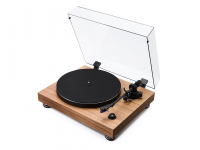
Just when you think you’ve gotten your head around the endless standards of home cinema, the industry pulls the proverbial rug out from underneath you.
We’ve had so many recently: UHD, 4K, 3D, HDR, HLG… even 8K. As much as you think you may have them all dialled, I hate to tell you but you’re fighting a losing battle. Big TV manufactures are forever releasing new technologies and giving them catchy names in an attempt to lure in consumers, whilst its not necessarily important to fully understand what they all are, it can help when buying a television, I’m going to attempt to explain exactly what HDR10+ is and why you should care.
There has been a rather popular format of media that has become somewhat of a household name; High Dynamic Range, better known as HDR. Those of you in the photography or audio world will have a brief but ultimately correct understanding of how this technology works. HDR is achieved by preserving details in the darkest and brightest areas of an image, ultimately offering the viewer a closer to real life experience when watching a movie. This is achieved in a very similar practice to HDR photography, where by a photographer will line up a shot, take a perfectly exposed image, a slightly under exposed image to bring out those lighter details and a slightly over exposed which will make the dark areas pop. Once each image is taken, the three are overlaid and the best characteristic of each image is taken and combined to create a final incredibly pleasing perfect image. Whilst this isn’t exactly what happens in the case of television, it’s a very good example of the basics.
Building on that was HDR10, now bear with me as this can get tricky:
HDR10 is a logical improvement of HDR, allowing support of up to 4000nits of brightness and a 10bit (thats just over billion) colour depth, and is capable of rec.2020 colour space. It doesn’t just stop there, Dolby in all it’s glory have decided they can go one better, which is great news (we think) and introduced Dolby Vision to the world. Working in a very similar way to HDR, a Dolby Vision source and television combination reviews a dedicated movie frame by frame and adjust each frame accordingly, rather than working in clusters like its younger brother, HDR. This in turn offers the viewer a clearer final image that is closer to what the director originally intended.
Dolby Vision can support image levels that surpass any television on the market today (consider this future proofing) such as up to 10,000 nits of brightness and a 12bit colour depth and displaying everything in a rec.2020 colour space. Now those numbers are very, very impressive, but in the real world don’t mean a thing, as they cant be achieved yet by modern standards. The key part of this description is its ability to review each frame individually, the proper terminology being Dynamic Meta Data; think of it as a fine adjustment.
This sounds fantastic right? Sign me up! I’ve got a dolby vision television and a dolby vision player, what else do I need?
The answer is: content. Unlike 4k Blu-ray which is becoming more and more popular, there is little to no Dolby Vision content on the market, and the small selection of stuff that is available to buy is often a bit under par. The problem with Dolby Vision is that it requires a license, and licenses are NOT cheap, and production companies would likely wish to not bother with this expenditure. The good news is that in the world of technology nothing is ever set in stone, theres always a way. So the head boffins at Samsung and Amazon have put pen to paper and developed HDR10+, which ticks a lot of the same boxes as Dolby Vision and also features Dynamic Meta Data (fine tuning). The kicker here is that HDR10+ is an open source meaning ANY manufacture can adopt it, and there are no licenses involved.
More great news is that streaming giant Amazon will also be broadcasting HDR10+ globally soon, which means if they are, its almost guaranteed that Netflix will follow suit. Does this mean the end of Dolby vision? Probably not, but its certainly going to give it a run for it’s money.
If your still a little confused then feel free to give any one of our stores a call to discuss HDR10+ if you want to really get to grips with the latest formats.
Author: Garrett, Plymouth store





